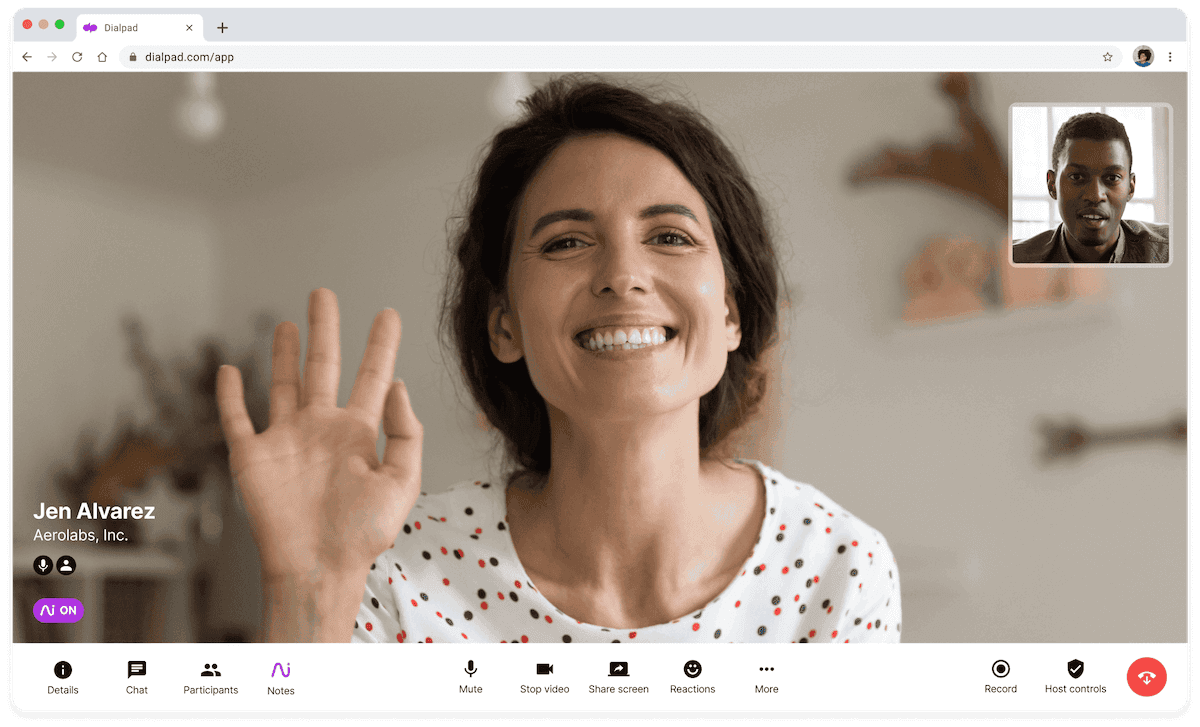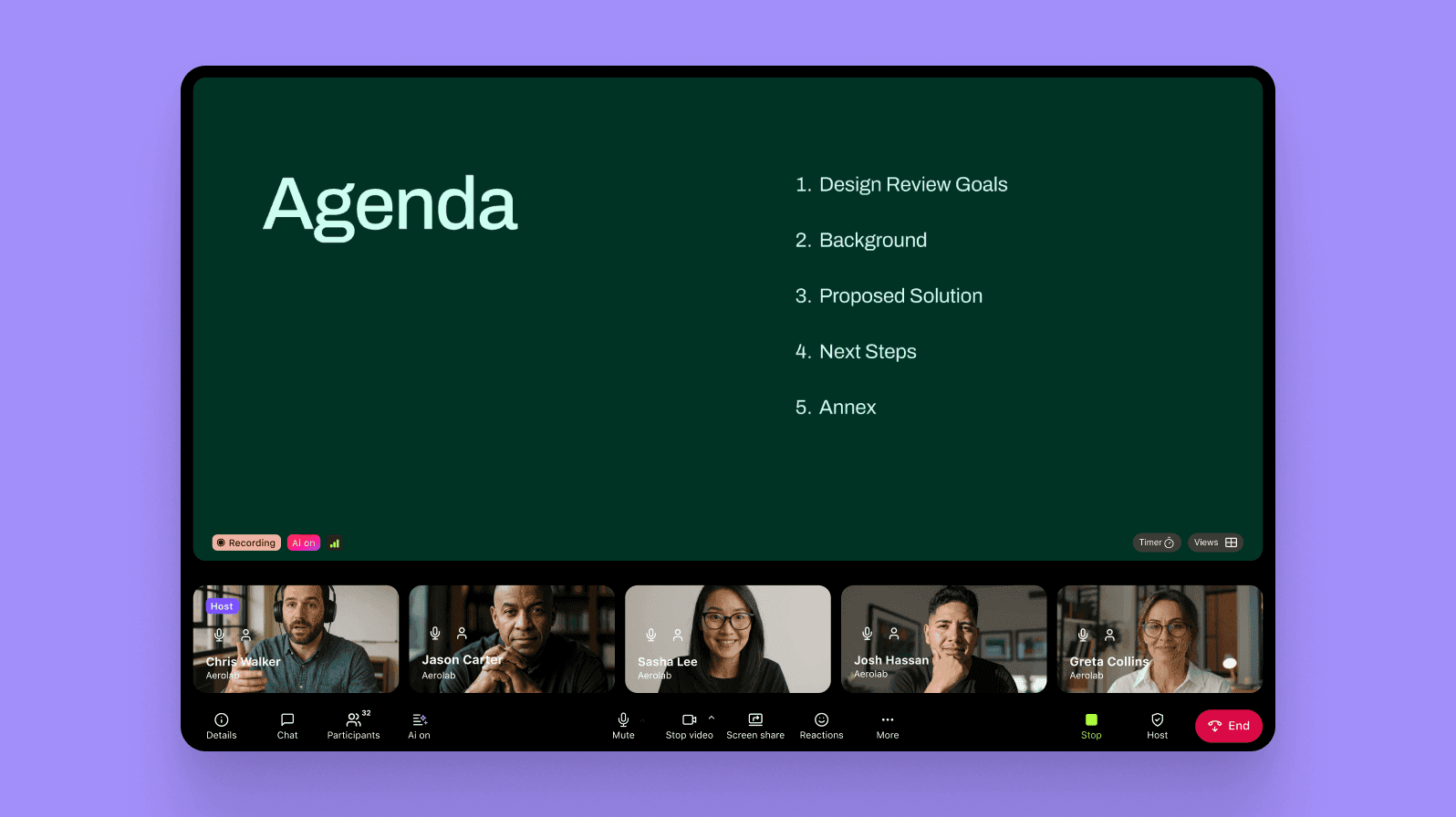Call from your browser
What is WebRTC?
Want to be able to make phone calls from your web browser? That's what WebRTC lets you do. Learn more about how it works below—and if you're interested in seeing how you can make HD calls from anywhere with Dialpad's AI-powered collaboration platform, book a product tour!

What is WebRTC?
WebRTC, sometimes stylized as Web RTC, stands for Web Real-Time Communication. You’ll often hear people talk about it when they talk about iOT (the “Internet of Things”), but it’s essentially an HTML5 specification that gives you real-time communications through a web browser—which is very cool because it means you don’t need to download apps like Skype anymore.
Today, you can use WebRTC from web browsers (like Google Chrome, Opera, Firefox, Mozilla, Safari, Microsoft Edge) with cross-platform compatibility (which means it’ll work on Apple iOS, Android, and other devices).
Here's how it looks in Dialpad, for instance:

👉 Did you know?
Dialpad was one of the earliest WebRTC adopters, launching at Google I/O in 2013—just one week after Google released it!
Why should businesses care?
If you have a remote or hybrid team that needs to be able to make phone calls on the go (meaning not just from a landline or desk phone), then WebRTC is helpful because it gives you an easier way to make phone calls from a web browser on your cell phone—or even laptop—from anywhere, without being stuck at the office.
But beyond that, there are some other cool things about WebRTC. We’ll let our CTO and Co-founder, Brian (who helped build Google Voice!) tell you why:

👀 Working remotely?
Grab the Hybrid Work Playbook, which includes real-life case studies and breaks down all things hybrid + remote, from building and sustaining a hybrid workforce to equipping your team for success.
Security for WebRTC
Access to media
Most apps ask for various permissions when you first install them, and WebRTC applications are no different. They need your express consent to access media like the camera on your phone or the microphone on your desktop.
Without this consent, WebRTC apps can't gain access, so you don't need to worry about an app listening to your everyday routine or collecting arbitrary data.
Encryption
First, PFS (Perfect Forward Secrecy) brings in a DTLS (Datagram Transport Layer Security) connection to securely exchange critical data. If audio and video are involved, necessary data can then be used to generate AES (Advanced Encryption Standard) keys used by SRTP (Secure Real-time Transport Protocol).
Whew. Not sure what that's all about? No worries. The main takeaway is that WebRTC connections are encrypted and secure, and it's mandatory that they follow specific security measures.
Browser protection
While connecting directly to another party through a web browser might seem less secure, it's actually better than downloading and installing a plug-in that could be hiding malware.
Additionally, automatic browser updates protect WebRTC connections from potential threats by addressing them before they become an issue.
How WebRTC works: A few terms to know
(Hat tip to Mozilla for the info.)
What does that data transfer process behind WebRTC calls look like?
To understand that, there are a few key elements to be familiar with.
API
APIs (Application Programming Interfaces) are like the ingredients of a recipe that come together to make the finished product. WebRTC is an API, and there are lots of other APIs out there, especially for software, that lets you make cool customizations. For example, Dialpad has some very cool custom APIs (which you can check out here).
SDP (Session Description Protocol)
Basically, an SDP is a data format that isn't the actual media content (e.g. your voice data) itself, but the metadata that describes elements of it, like the resolution, codecs, or encryption.
NAT (Network Address Translation)
NAT is what gives your device a public IP address. Any router will have a public IP address, and every device connected to that router will have a private IP address. This means that even though a STUN server can find a public IP address, not anyone can create a connection with it.
STUN (Session Traversal Utilities for NAT)
STUN is the protocol that helps you find your public IP address. A client will send a request to a STUN server on the Internet, which will reply with:
The client’s public address and
Whether the client is accessible behind their router’s NAT.
Javascript
A programming language primarily used to make web content interactive, Javascript is essential for WebRTC. The parts that make WebRTC usable run on Javascript APIs.
Makes calls more easily with WebRTC + Dialpad
Not every client or prospect wants to download an app to join your video chat or conference call. With Dialpad, you can make it easy for them to join from a web browser thanks to WebRTC.
Unlike legacy video conferencing and VoIP providers, Dialpad has WebRTC built right into its AI-powered collaboration platform. Just log in on a web browser and start making calls from there!
Still making your clients download an app to join your video call?
You don't have to do that anymore with Dialpad. See how Dialpad lets you communicate with prospects, customers, teammates, and more—right from a web browser! Book a demo, or take a self-guided interactive tour of the app on your own!
